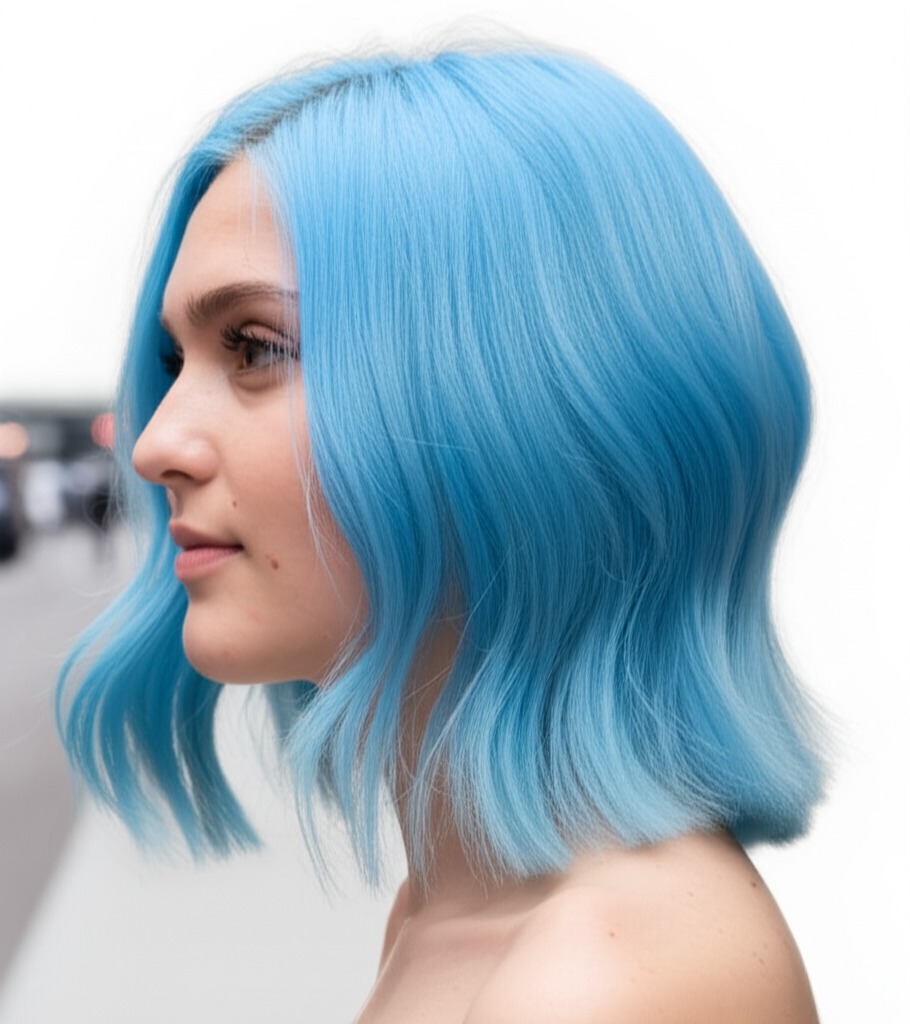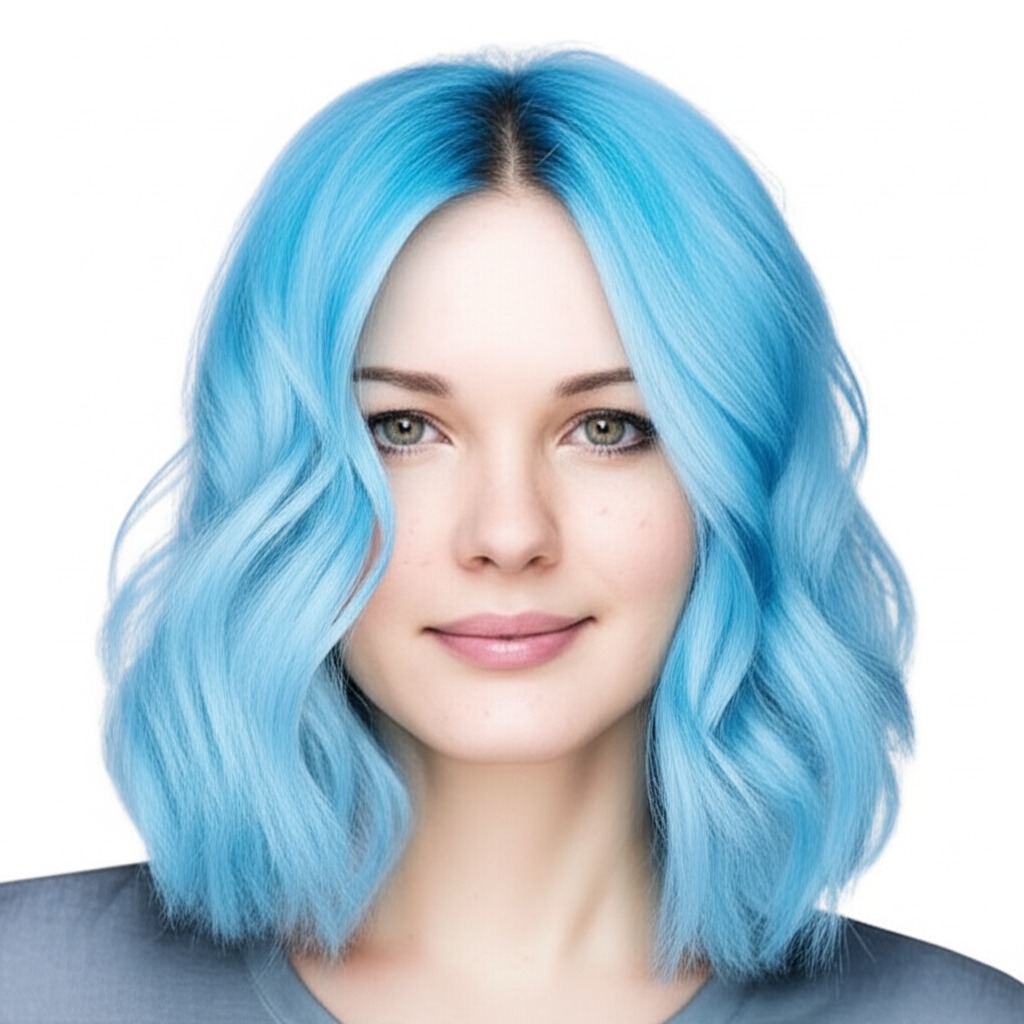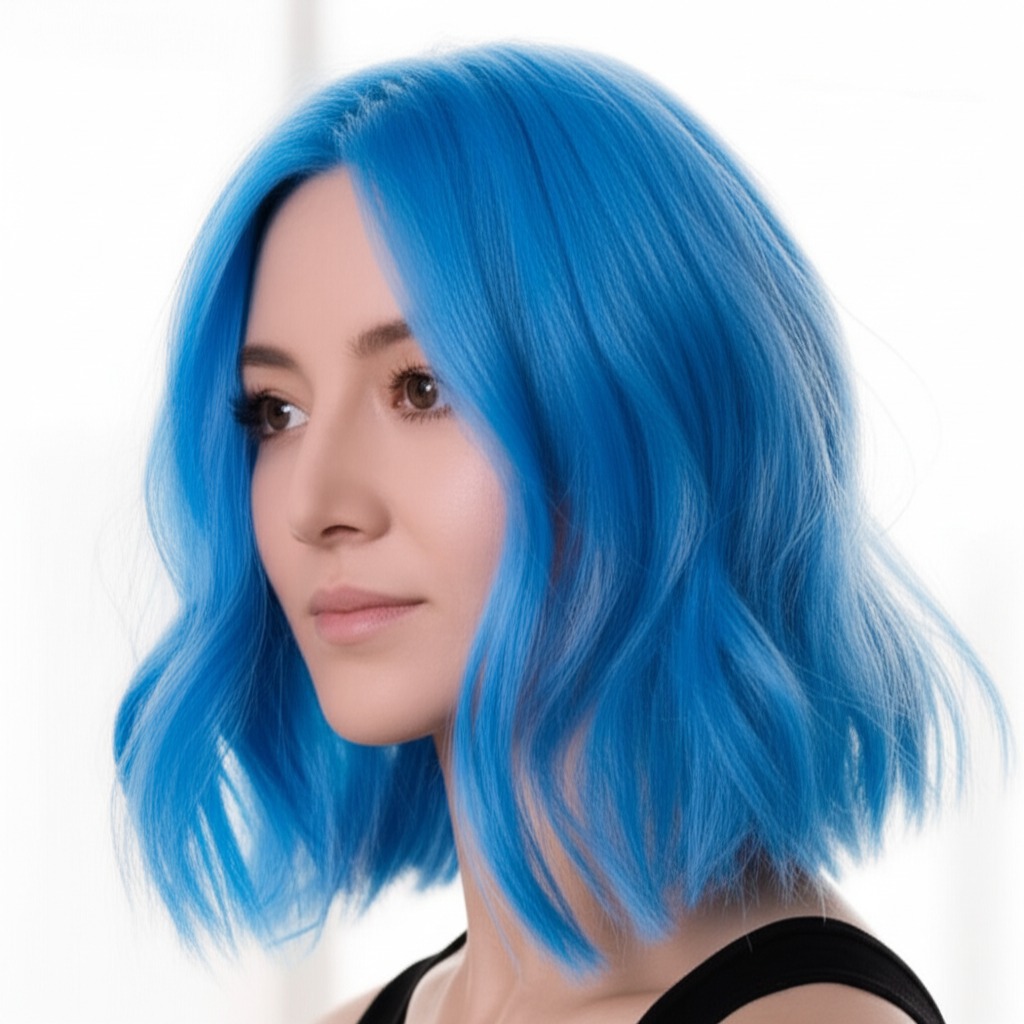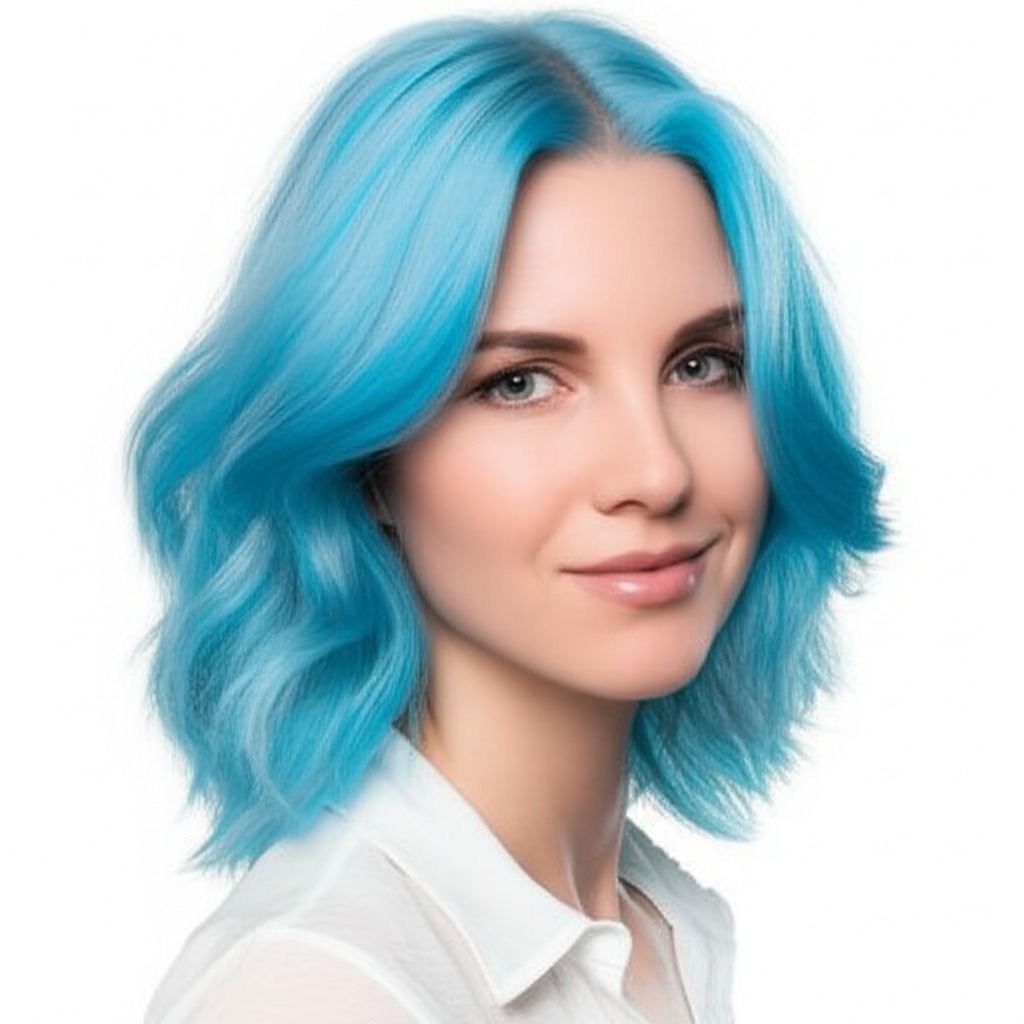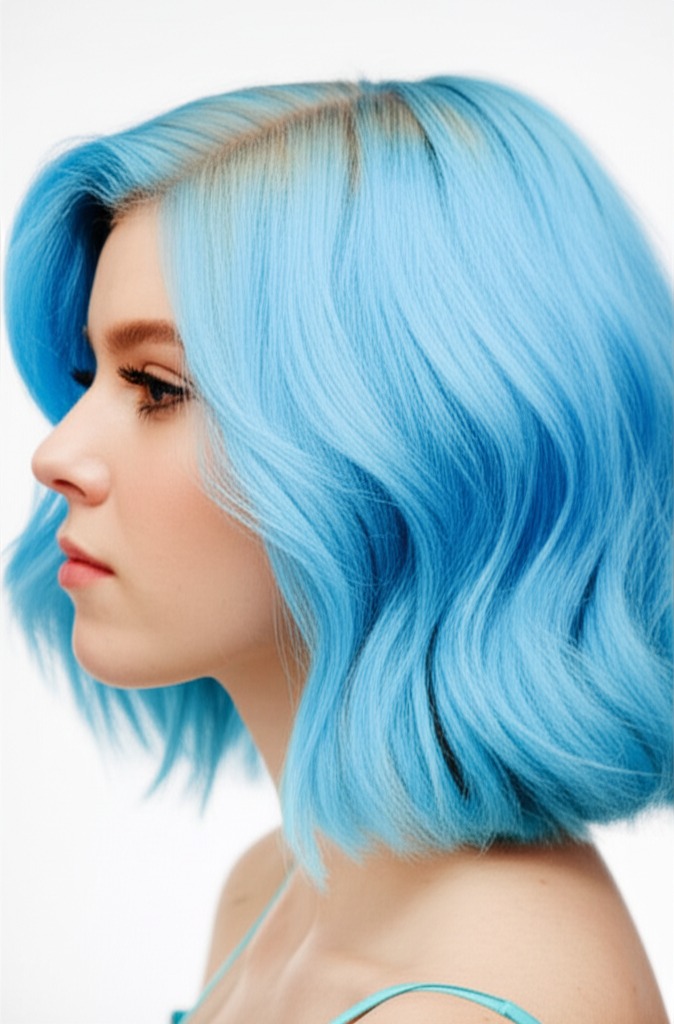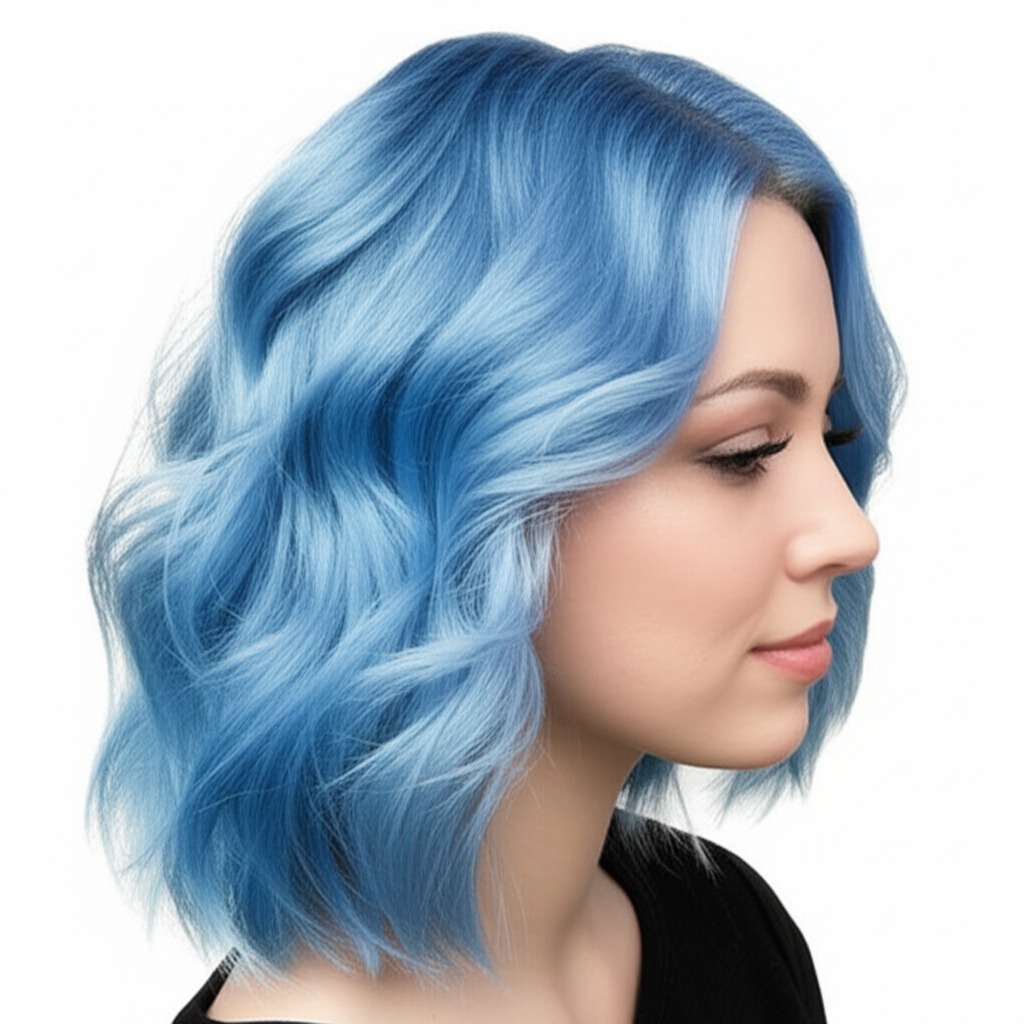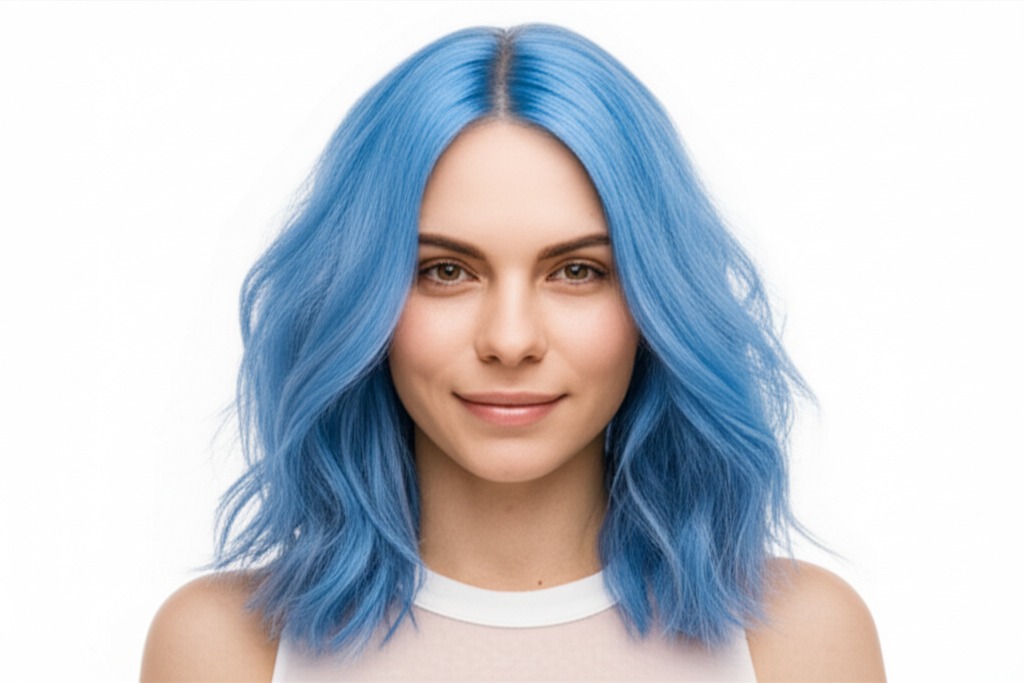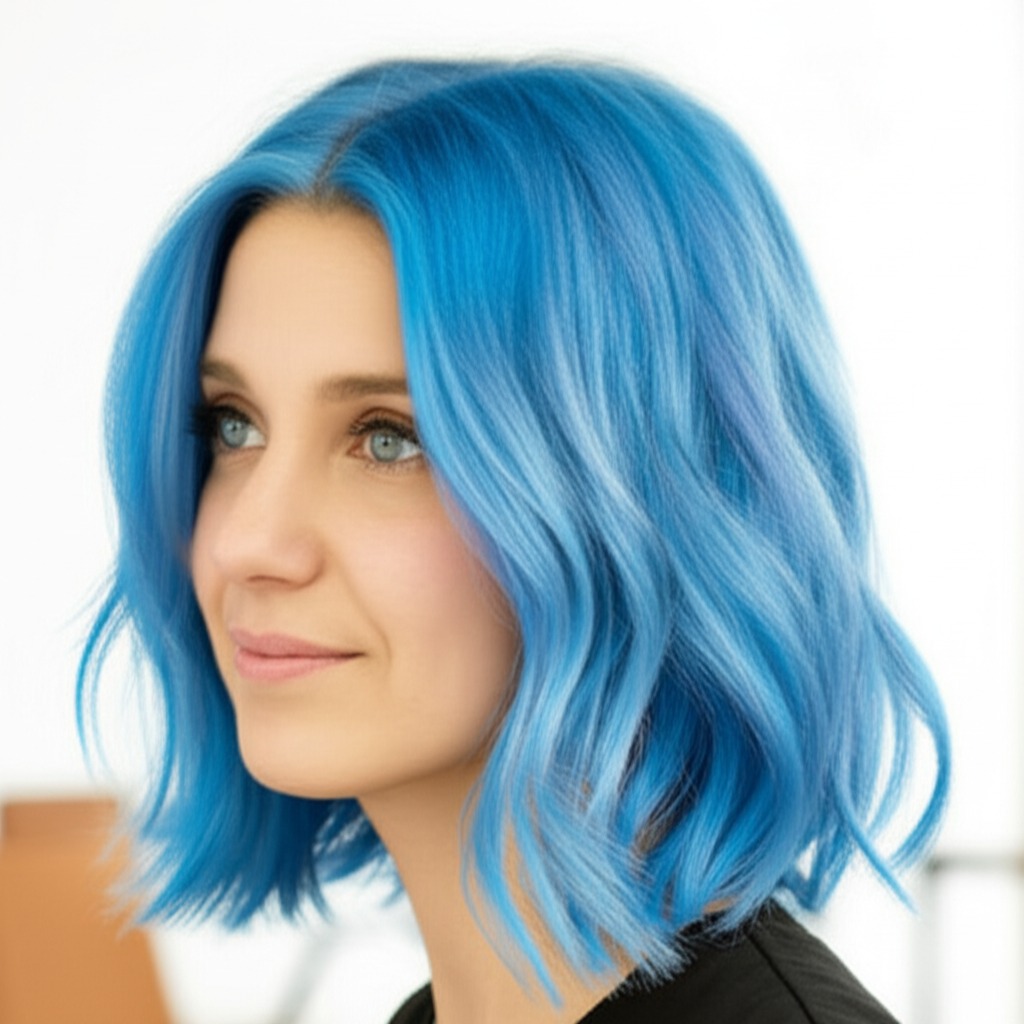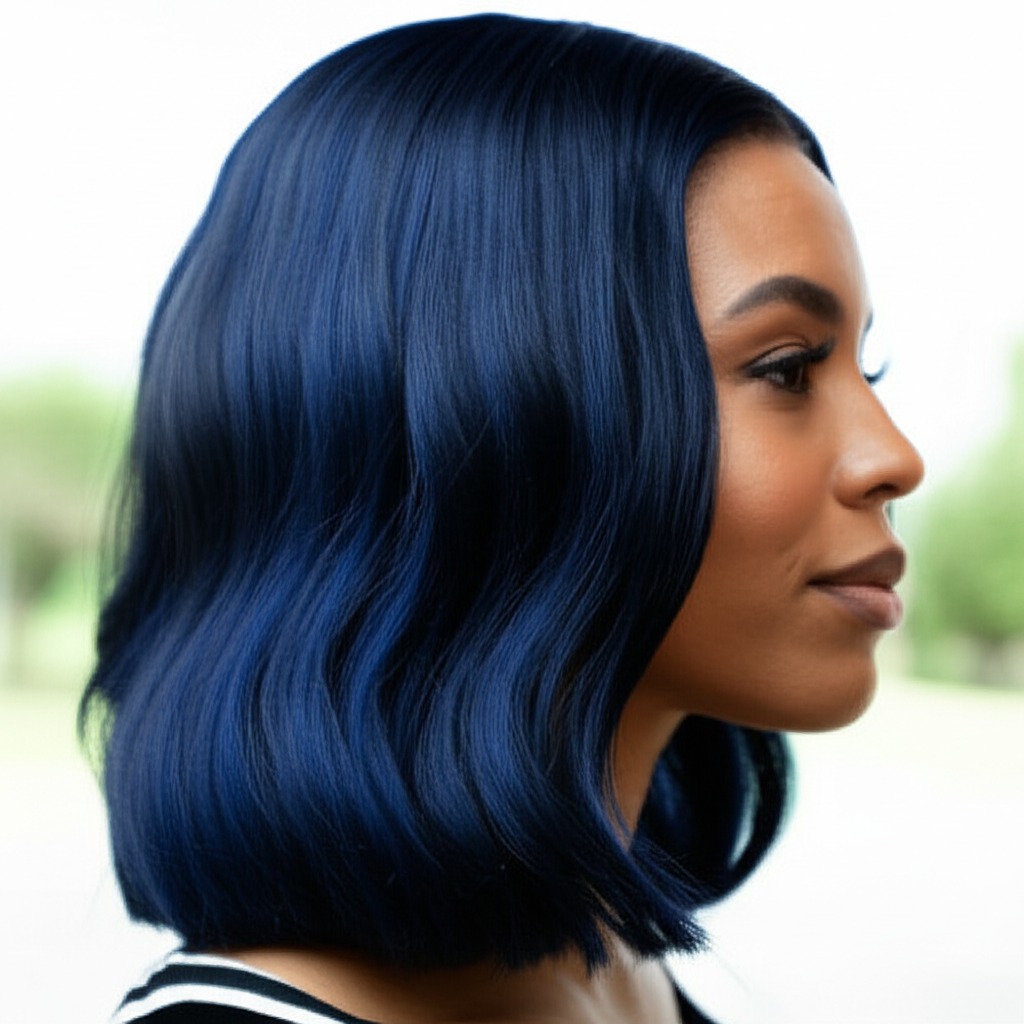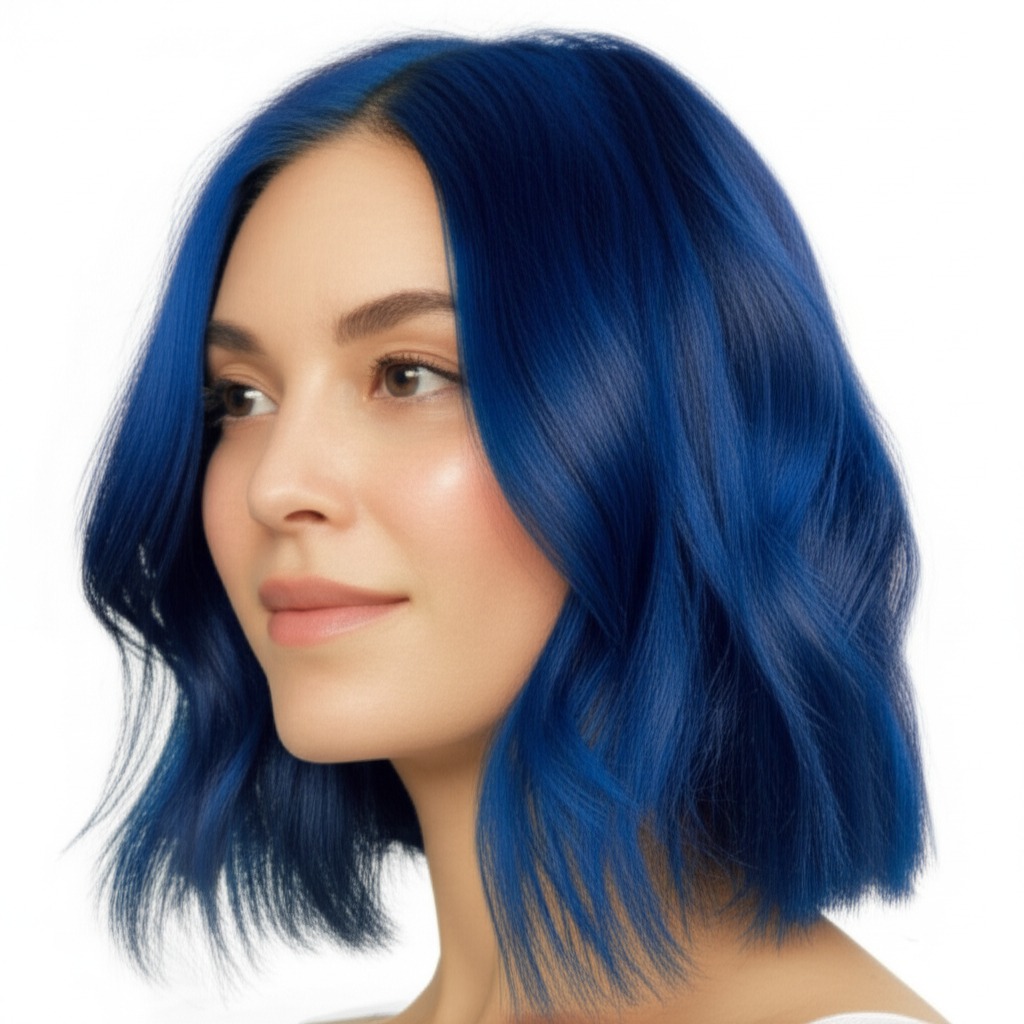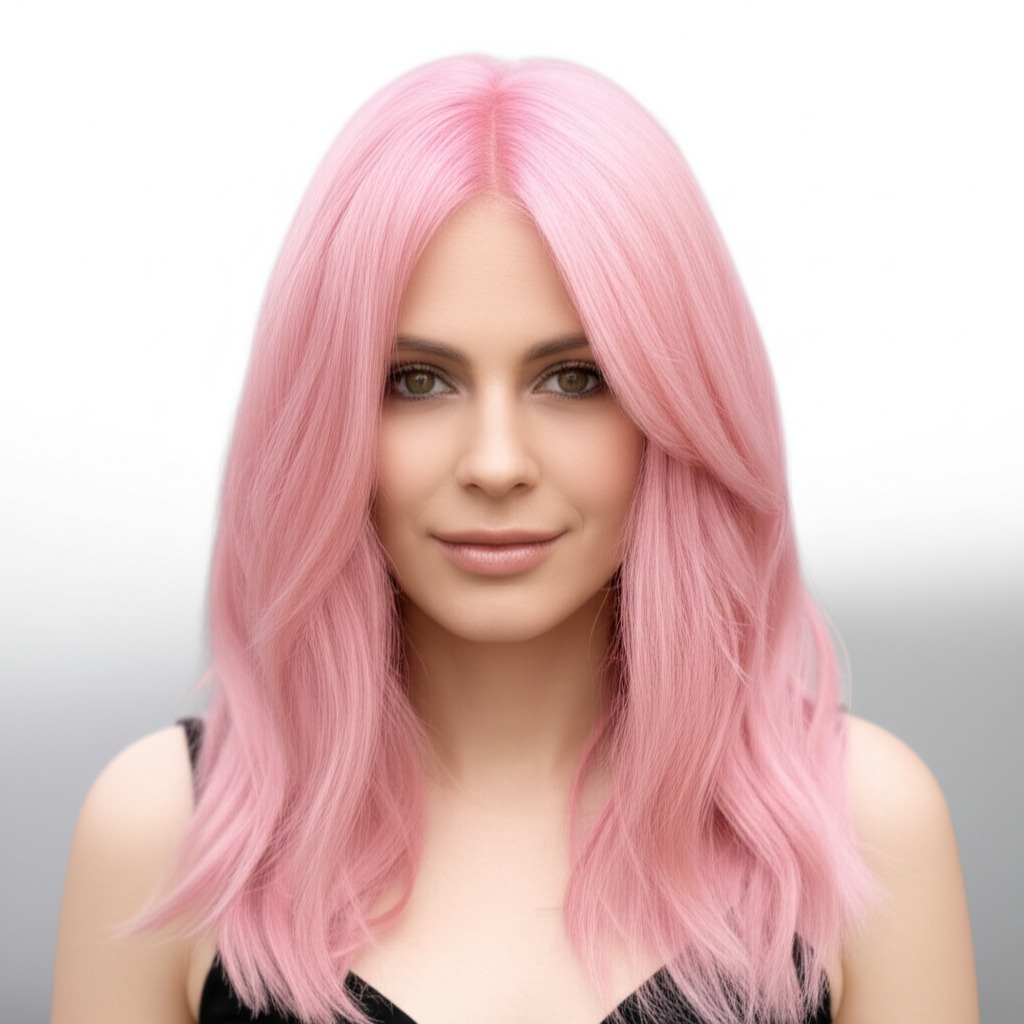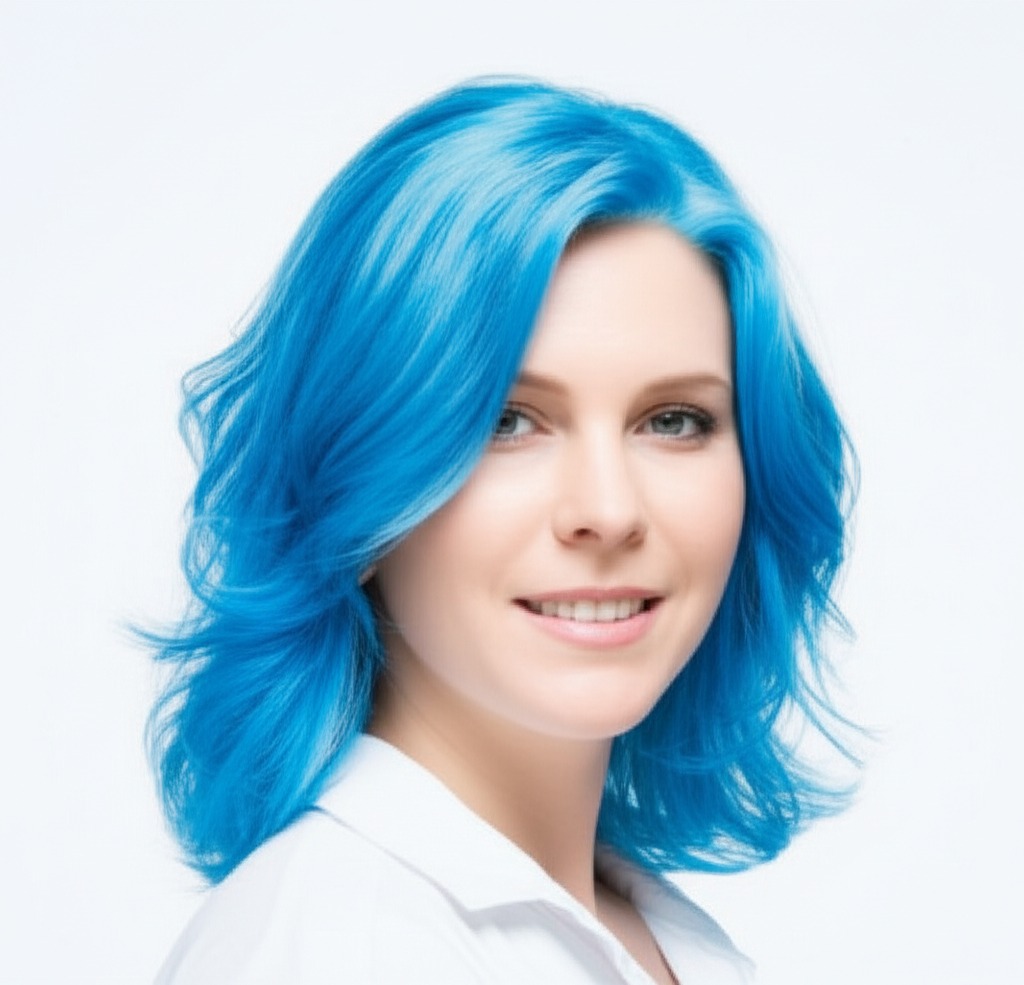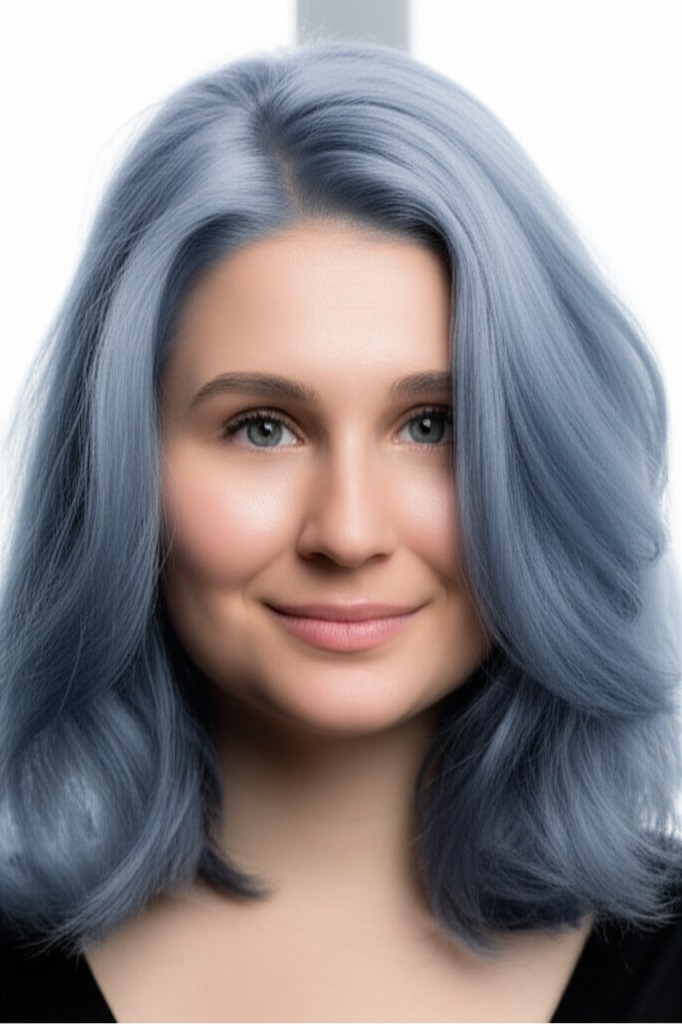#Dive into Dreamy Pastel Blue Hair Color
Pastel blue hair is a bold statement – a playful splash of cool-toned beauty that can transform your look! But achieving the perfect shade requires understanding its nuances and how it interacts with your individual features and hair. This guide breaks down everything you need to know about rocking this gorgeous hue, from initial consultation to daily care.
#1. Understanding Pastel Blue: Shade Definition
Pastel blue isn’t just blue. It's a carefully crafted shade built on undertones and depth.
- Undertone: Almost all pastel blues lean cool. This means they have hints of silver, grey, or even violet within the blue itself. Warm-toned pastels (think teal with golden highlights) are significantly harder to achieve and less common.
- Depth/Levels: Pastel colors exist on a very light scale. We’re talking Level 8 – 10 on most hair color charts. Level 8 is the lightest, while Level 10 is almost white. The lighter you go, the more transparent the color becomes and the more visible your underlying base tone will be. A level 9 or 10 pastel blue often requires a very light (almost platinum) starting point to look its best. A slightly deeper level 8 might work if you’re aiming for a muted, dusty blue effect.
#2. Who Does Pastel Blue Flatter?
While confidence is the best accessory, certain features tend to harmonize beautifully with pastel blue hair.
- Skin Tone & Undertone: Cool skin tones (pink or red undertones) are the ideal canvas for this color. Think fair porcelain skin, cool olive complexions, and even deeper skin tones with cooler undertones. Neutral skin can also work, but be mindful of potential clashes if your neutral leans warmer.
- Eye Colors: Blue, grey, green, and hazel eyes pop against pastel blue hair! Even brown eyes can look striking—the contrast creates a beautiful focal point.
- Natural Level Starting Points: This is crucial! Pastel blue requires a very light base. Generally:
- Naturally Dark (Levels 3-6): Significant lightening will be needed, which takes time and commitment. Consider gradual brightening over several sessions.
- Medium Brown/Light Brown (Levels 7-8): Still likely needs lifting but less drastic than darker hair.
- Blonde (Levels 9-10): The easiest starting point! You might only need a toner to deposit the blue pigment.
#3. Technique Options: Choosing Your Approach
How you apply pastel blue dramatically impacts the final result.
- Single Process: The most straightforward, but requires the lightest base possible (Level 9 or 10). Best for those already very blonde and wanting a solid color application.
- Highlights/Lowlights: Not typically used to add blue directly, but can be employed strategically before applying pastel blue to create dimension. For example, subtle silver highlights can enhance the cool tone.
- Babylights: Similar to highlights, babylights add brightness and dimension before the pastel blue application. This is a good option for those wanting a softer look or needing more even lightening.
- Gloss/Toner: Essential! A gloss or toner deposits the actual pastel blue pigment onto pre-lightened hair. It's often used after bleaching to refine the tone and add vibrancy.
- Balayage-Effect vs Solid: A balayage approach (hand-painted highlights) can create a softer, more blended look, especially for those with darker bases or wanting less commitment. A solid application offers even saturation but requires precise placement and is harder to maintain if you want to go back to your natural color.
#4. Maintenance & Longevity: The Reality Check
Pastel blue demands dedication!
- Wash Frequency: Limit washes to 2-3 times per week using cool water. Hot water fades color faster.
- Toner Refresh: Expect toner touch-ups every 4-8 weeks, depending on your hair growth and how quickly the color fades. This is non-negotiable!
- Root Growth Pacing: As your natural roots grow in, they'll create a contrast with the pastel blue. Consider strategically blending them with babylights or a balayage effect for a more gradual transition.
- Budget/Time Planning: This isn’t a budget-friendly color! Expect salon visits every 4-8 weeks and potentially multiple lightening sessions initially. Factor in several hours at the salon, especially for darker hair.
#5. Seasonality & Pairing with Cuts: Styling Considerations
Pastel blue is incredibly versatile but shines best when styled thoughtfully.
- Cuts:
- Bob/Lob: A blunt bob or lob showcases the color’s vibrancy and clean lines.
- Long Layers: Adds movement and dimension, allowing the pastel blue to catch the light beautifully.
- Pixie Cut: Bold and edgy – a statement for those who aren't afraid to stand out!
- Seasonal Tweaks: In winter, consider adding subtle silver or grey undertones for a cooler, more icy look. In summer, embrace brighter blues with hints of turquoise.
- Event/Occasion Picks:
- Work: A muted pastel blue (closer to level 8) and balayage application can be professional-appropriate.
- Daytime: Perfect for a fun, playful vibe!
- Evening: Amp up the vibrancy with glosses and shimmers for a dazzling effect.
- Weddings: A soft pastel blue is romantic and ethereal – just ensure it complements your overall look and venue aesthetic.
#6. At-Home Care: Protecting Your Investment
Proper care is vital to preserving that gorgeous pastel hue.
- Sulfate-Free Shampoo & Conditioner: Sulfates strip color, so opt for gentle, sulfate-free formulas specifically designed for colored hair.
- Clarifying Cadence: While sulfate-free products are key, buildup can still occur. Use a clarifying shampoo occasionally (every 4-6 weeks) to remove residue and restore shine.
- Heat Protection: Heat styling damages color and dries out your hair. Always use a heat protectant spray before using any hot tools.
- Color-Safe Styling Tips: Avoid harsh chemicals in styling products. Consider air drying or low-heat styling whenever possible.
- Product Checklist: Sulfate-free shampoo & conditioner, color-safe leave-in conditioner, heat protectant spray, purple/silver toning mask (for neutralizing brassiness).
#7. Common Pitfalls: Avoiding Color Disasters
Let’s preemptively tackle potential problems!
- Brassiness: Pastel blue is highly susceptible to brassiness (yellow or orange tones). Regular toning with a violet-based shampoo or mask is essential.
- Banding: Uneven lightening can result in noticeable bands of color. A skilled stylist will use techniques like foil highlights and balayage to minimize this risk.
- Patchiness: This often occurs when the base isn’t light enough, leading to uneven color distribution. Proper pre-lightening is crucial!
#8. Pros & Cons: Weighing Your Options
Let's be realistic about what you're signing up for.
Pros:
- Unique and eye-catching
- Versatile styling options
- Can brighten your complexion
Cons:
- High maintenance – frequent salon visits and toning required
- Color fade is inevitable, requiring consistent upkeep
- Significant investment of time and money
#9. Salon Consultation Script: Setting Expectations
Before committing, a thorough consultation is key. Here are prompts for you to discuss with your stylist:
- “I’m interested in pastel blue hair color. Can we assess my current level and determine the best lightening plan?”
- "What's the estimated time commitment for each salon visit?"
- “How often will I need toner touch-ups, and what is the cost associated with those appointments?”
- "Can you show me examples of pastel blue on different skin tones similar to mine?"
- “What at-home care products do you recommend specifically for this color?”
- "Let's discuss a plan if my natural roots grow in quickly."
#10. FAQs: Your Burning Questions Answered
- Can I achieve pastel blue on dark brown hair? Yes, but it requires significant lightening over multiple sessions and is more expensive than starting with lighter hair.
- How long will the color last? Without regular toning, expect 4-6 weeks before noticeable fading occurs.
- Is pastel blue damaging to my hair? Lightening processes always impact hair health. Proper care and minimizing heat styling are crucial for maintaining strength and shine.
- Can I do this at home? While possible, it’s highly recommended to go to a professional. Achieving the desired shade and avoiding damage requires expertise.
- What if my pastel blue turns green? This is usually due to brassiness reacting with the blue pigment. A violet-based toner will correct this!
- Will pastel blue work for fine hair? Yes, but be mindful that frequent lightening can weaken finer strands. Prioritize deep conditioning treatments.
*Disclaimer: This article provides general guidance and is not a substitute for professional advice from a qualified hairstylist or colorist.
